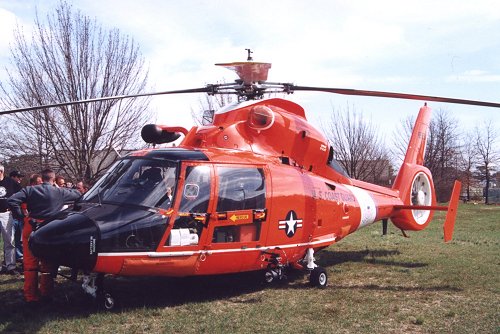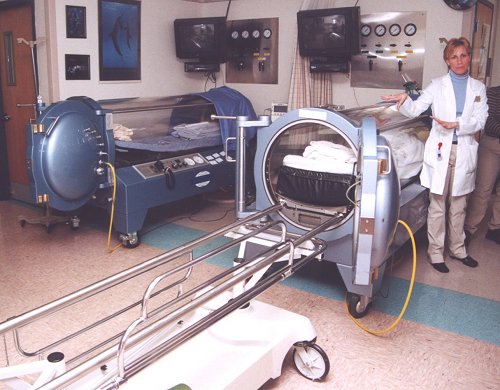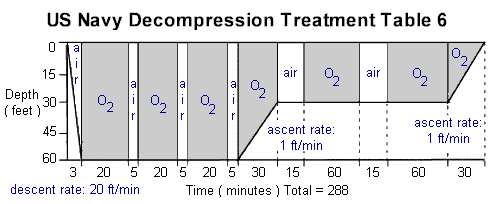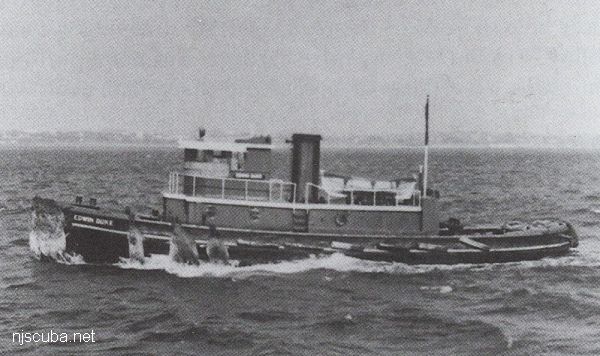Insurance & Emergencies

You would have to be crazy to dive in the North Atlantic ( or anywhere ) and not protect yourself with inexpensive accident insurance coverage available from DAN - Diver's Alert Network. Check your existing health insurance policy, and you will most certainly find that accidents involving scuba diving are excluded ( skydiving too ).
DAN offers various packages, tailored to everyone from the most occasional Caribbean diver to the hard-core Andrea Doria techie. Coverage includes recompression chambers, transport, and other costs, both in and out of the country. The yearly fee for all this is not much more than the cost of a mask, or a single day's boat diving, and also includes membership in the organization and a subscription to their excellent safety-oriented magazine Alert Diver.
This accident insurance is not the same as the professional liability insurance mentioned elsewhere. Accident insurance is available to anyone, regardless of certification level. Although you would hope to never actually need it, this insurance would pay for itself on the first use, as the cost of a single "chamber ride" ( see below ) can be in the thousands of dollars.
Emergency Treatment
Diving emergencies, like any emergency, are always situation-dependent. The response to a diving emergency is not unlike the response to any medical emergency and will always begin with basic life support measures. A medical diagnosis of a diving injury should not be made in the field but should be treated with standard diving first aid until the case is turned over to medical professionals.
Guideline for a dive emergency plan:
- Establish & Maintain:
- (A) - Airway
- (B) - Breathing
- (C) - Circulation
- Administer 100% Oxygen
- have patient lie on left side with head supported
- For mild symptoms: ( see below )
- administer nonalcoholic fluids ( orally )
- observe for relief from symptoms within 30 minutes
- refer to diving physician as soon as possible
- contact local EMS at 911
or U.S. Coast Guard ( Marine VHF Channel 16 )
for transport to the nearest hospital
- Collect vital information on patient for EMS personnel:
- name, age, medical history
- dive profile: depths, times, breathing gases
- address, telephone, contacts
- symptoms & first aid procedures administered
- Contact DAN at ( 919) 684-8111 or ( 919) 684-4DAN (collect)
mild symptoms:
- fatigue / nausea
- skin rash / itching
serious symptoms:
- pain - particularly in joints, abdomen, lower back
- unusual weakness, numbness, tingling, paralysis
- dizziness, difficulty with vision or speech
- difficulty in breathing, severe cough, bloody frothy mouth
- decrease or loss of consciousness, convulsions
For the offshore vessel with a diving emergency, the most effective communication is generally through U.S. Coast Guard channels. The USCG will normally determine their response to a medical diver emergency based on the diver's condition and circumstance. Although the Coast Guard has no statutory requirement to provide recompression equipment, they generally will provide, as available and indicated, assistance in transportation or evacuation to the nearest appropriate hyperbaric chamber. Many Coast Guard regions actually have 'contact with DAN' written into their protocols, so it's not surprising to pick up requests for assistance from the Coast Guard on the DAN Emergency Line. DAN also routinely provides medical consults for the Coast Guard and their flight surgeons, especially when the situation involves a DAN member.

cruise speed 120 knots, max range 400 nm, crew: 4

Unfortunately, the Brick Hospital recompression facility is now closed, leaving the nearest chambers in New York City and Philadelphia.
The choice of the appropriate hyperbaric facility is generally tempered by the nearest hospital-based facility, provided that the diver is, or has been stabilized and is not suffering from other possibly critical injury or illness. In even questionable cases, the diver may instead be transported to the nearest emergency department for evaluation and stabilization. For many areas around New Jersey, a common and convenient hyperbaric oxygen site is Brick Hospital ( Medical Center of Ocean County ) in the Point Pleasant area. However, since Brick Hospital lacks a convenient local helipad, in the event of a helicopter evacuation the Coast Guard may opt to take the victim to a facility in New York City or Philadelphia. The Brick facility is equipped with two monoplace chambers, essentially large acrylic tubes into which a DCS victim is inserted and sealed up for treatment. Larger facilities may have multi-place chambers, in which one or more victims may be treated along with an attending technician inside the chamber.

Although the Brick hyperbaric facility is equipped only with monoplace chambers, it should not be overlooked for the treatment of decompression illness ( DCI ), since many cases are effectively treated in such chambers. Indeed, although there are disadvantages to treating divers in monoplace chambers, the disadvantages may be outweighed by the advantage of proximity and time. Furthermore, many monoplace chambers are capable of providing the U.S. Navy Treatment Table 6, recognized as the standard of care for treatment of decompression sickness. Despite the effectiveness of monoplace chambers, there are still a number of advantages in treating divers in the larger multi-place chambers:
- deeper treatment tables may be utilized
- The patient may be evaluated throughout the progress of the treatment
- The diver's airway may be more effectively managed ( especially in the unconscious patient )
- claustrophobia may be greatly diminished
- patients with multiple IVs and monitoring leads may be easily admitted into the chamber environment

For many years the deeper U.S. Navy Treatment Table 6A was recommended for treatment of arterial gas embolism ( AGE - gas bubbles in the bloodstream ). This involves an initial 30-minute excursion to 165 fsw, while the diver breathes air or mixed gas. The diver then completes the balance of the treatment on oxygen ( identical to the U.S. Navy Treatment Table 6, which has a maximum depth of 60 fsw ). The rationale for this deeper protocol was to provide for maximum compression of any tissue bubble/gas formation which could then be resolved by oxygen-breathing throughout the balance of the 5+ hour treatment. However, a broad range of clinical experience suggests that AGE will respond to USN TT6.
Many hyperbaric physicians feel that the possible advantage to be gained from the deeper USN TT6A over the USN TT6 is probably lost if there is a significant delay in transporting the patient to a more distant facility. Also, the advantage of compressing to 165 fsw has been called into question by some controlled animal studies, suggesting that compression beyond 60 fsw provides no additional benefit. Reduction in bubble size is only one goal in the treatment of DCI, which generally includes hyperoxygenation, rehydration, and possible additional drug therapy. At the present time, the use of USN TT6A is likely to be reserved for divers with large inert gas loads and for those that can be treated with little delay.
This article is based in part on a communication from:
Daniel A. Nord, EMT-P, CHT
Director, DAN Medical Services
Department of Anesthesiology
Duke University Medical Center
dnord@dan.duke.edu
Links:
Scuba diving is an extreme sport that attracts tens of thousands of participants. The sport receives notoriety when something goes wrong because the incident is usually fatal.

